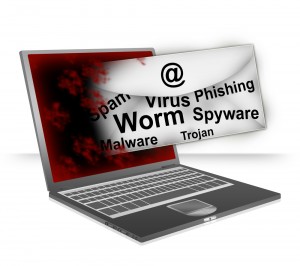 Of the 294 billion email messages sent every day, at least 90% are estimated to be classified as spam, or contain malicious code. For the end user, spam may be considered little more than an annoyance, something that needs to be managed every day to keep their inboxes clutter-free. But for the IT manager (or designated IT contact), spam should be of far greater concern.
Of the 294 billion email messages sent every day, at least 90% are estimated to be classified as spam, or contain malicious code. For the end user, spam may be considered little more than an annoyance, something that needs to be managed every day to keep their inboxes clutter-free. But for the IT manager (or designated IT contact), spam should be of far greater concern.
Not just an annoyance
In many cases spam is just annoying but harmless. Employees can be briefed to use basic filtering, and to block senders using subject lines relating to (for example): generic medications, solicitations for help sending money abroad, and invitations to join dubious dating networks. If you ensure these are ignored as they deserve to be, the only business concern is the time employees waste managing such junk.
However, other spam messages have the potential to cause major problems for your business. Often legitimate-looking messages are used by scammers to try and trick your users into handing over passwords or other sensitive information that can then be resold or exploited for profit. If a user does pass on their login details, hackers can then run riot on the company network.
The other major problem with spam comes in the files that are sometimes attached. An innocuous looking zip, doc or spreadsheet attachment can actually often contain some kind of malware. These apps can steal data, delete files or provide a backdoor for hackers to exploit, granting them access to internal network resources.
Managing spam
Most email clients, like Microsoft Outlook and Mac Mail, come with some built-in spam email detection and filtering functionality. These features reduce the likelihood of your users being tricked into downloading malware.
The problem is that once the infected files have been downloaded into a user’s mailbox, there is always a risk that the malware will be triggered (accidentally or automatically) with all the applicable consequences. For the highest levels of protection, IT managers will want to keep spam out of their network completely. Modern firewalls can be configured to identify malicious files and traffic, blocking them at the point of entry, but configuration of such devices requires ongoing maintenance, and should be handled by IT experts.
Keeping spam out of your company network
Using hosting services from Broadband Cloud Solutions, spam can be filtered from mailboxes before it ever comes into contact with your network. Included as standard with all hosting services, spam filters identify and block suspicious email so it never reaches your users’ inboxes. Messages are stored on the host servers, allowing you to review filtered messages in the event that a legitimate email goes missing, but your network remains protected from malware at all times.
In the same way that your company receptionist vets all visitors before allowing them into the office, offsite spam filtering services verifies that all email is legitimate before passing it on to your inbox.
Using remote, or hosted, spam filtering means your business is far less likely to fall victim to malware and cybercriminals, offering valuable business data protection.
Leave a Reply